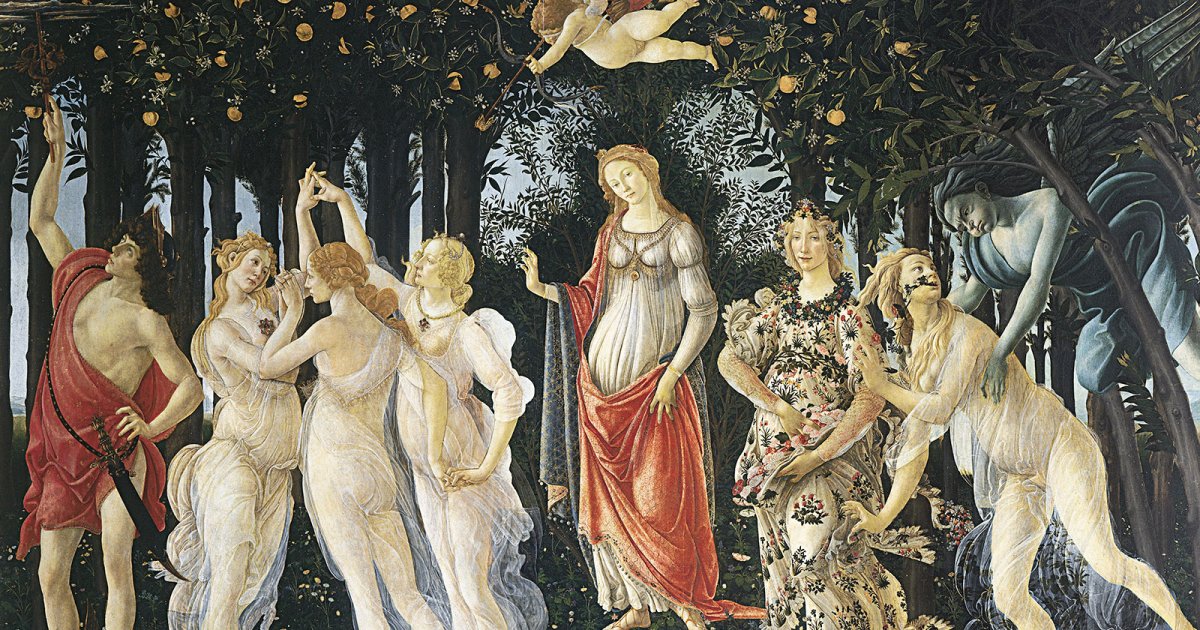UFFIZI, Botticelli
 Language: English / USA
Language: English / USA
Botticelli's great mythical scenes (Primavera, The Birth of Venus, Pallas and the Centaur) are the precious fruit of the intellectual moment in time that was dominated by Lorenzo the Magnificent. Even though they have been interpreted in many ways and contain many hidden meanings, all the works are united by their incredible measure, grace, and kindness.
To the Florentine humanist culture, Venus represented beauty, harmony, and the triumph of human virtues against bestial instincts.
In the painting known as Primavera, or Spring, all the figures are aligned on a single level, with a wood in the background. To understand the scene, you have to look at it from right to left, beginning with the Zephyrus, who is the impetuous wind that chases his girlfriend Chloris among the trees. In the spring wind embrace, Chloris transforms into Flora, and fills the world with flowers: Botticelli painted about 130 different species of flowers with meticulous botanical precision. In the center, you see Venus separating from the dark green of a bush with a relaxed and gentle gesture; above her, her son Eros is ready to shoot his arrow of passion.
Then you see the group of the Three Graces: they are delightfully intertwined in a dance step, the very image of serenity. Lastly on the very left, the god Mercury clears the sky of its clouds with his traditional staff.
Now go on to The Birth of Venus. Even though it's not a difficult mythological interpretation, this painting can still be viewed on many different levels. Beautifully naked, blond hair waving in the wind, Venus glides through a vast, lightly rippled sea on a large shell, pushed by the breath of two tightly-embraced winds. At the shore, a loving young girl is waiting for her, getting ready to wrap the goddess in a rich pink cloak. In the painting, Botticelli used a double linen cloth as a base for holding a fine white-blue alabaster powder, thereby obtaining an effect of diffused brightness and transparency.
Now admire the third mythological painting, this time vertical and showing Pallas Athena crowned with olive branches, leaning against a finely chiseled lance while caressing a centaur's hair. Half man and half horse, and therefore a symbol of unbridled energy and instinct, the centaur seems calmed by the touch of the goddess of wisdom.
FUN FACT: in Botticelli's Primavera, the boy depicted as Mercury is Giuliano dei Medici, who had been assassinated in the Cathedral in the Pazzi conspiracy a few years earlier. The painting is also a tribute to him.



